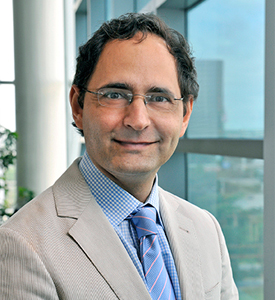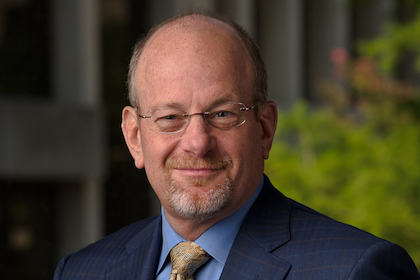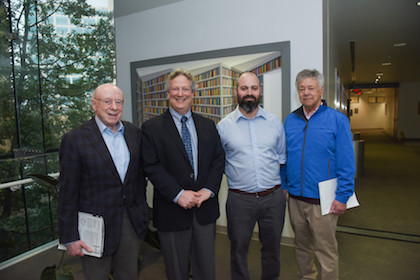Next presentation on February 5, 2015 to address ‘Art, Science, and Surgery’
By Gregg Shields
Dr. Sumeet S. Teotia, a physician, plastic surgeon, classical artist, and medical illustrator, will present an analysis of the process of creating a beautiful drawing and compare that to his work as a plastic surgeon in his President’s Lecture Series presentation, “Art, Science, and Surgery: A Plastic Surgeon’s Perspective.”

In the first President’s Lecture of 2015, Dr. Teotia will explore how fine art and well-crafted plastic surgery come from similar origins – an imitation of nature – in a presentation on Thursday, Feb. 5, at 4 p.m. in the Tom and Lula Gooch Auditorium on South Campus. A reception will follow the presentation.
>“Becoming a skillful self-critical surgeon requires training,” said Dr. Teotia, “and becoming an artist is no less rigorous.”
His lecture will provide a step-by-step analysis of how an artist can create an academic professional drawing starting with simple shapes and progressing to tones and half-tones in shadow, and compare that with each step to the process of plastic surgery.
Dr. Teotia, Assistant Professor of Plastic Surgery, leads UT Southwestern’s breast reconstruction program and is closely involved with the breast cancer team – surgical oncologists, medical and radiation oncologists, and geneticists – at the Harold C. Simmons Cancer Center.
A classically trained draughtsman and artist, Dr. Teotia is a surgical expert in breast reconstruction, which is at the core of his practice as part of multidisciplinary cancer care at the Medical Center. He combines his artistic background with science and surgery and attempts to achieve a beautiful harmony that is grounded in an honest visual reality.
He has performed more than 500 soft-tissue microvascular reconstruction flap procedures of the breast only, and also specializes in nipple sparing mastectomy reconstruction as part of an implant-based reconstruction practice. With the help of his partners, he works closely with a highly specialized breast-only reconstructive team at UT Southwestern, ultimately benefitting the patient with high success and helping advance techniques that are pioneering and creative to obtain a superior surgical result.
“Fine art is an interpretation of visual nature,” Dr. Teotia explained. “Ultimately it’s about seeing and observing, and both art and surgery must copy nature first. The difference between art and nature is that one imitates the other.”
Dr. Teotia quoted Leonardo da Vinci, “Human subtlety will never devise an invention more beautiful, more simple or more direct than does nature because in her inventions nothing is lacking, and nothing is superfluous.”
Of course, da Vinci is known for his dissection of cadavers to study the human figure, but is more famous for his artistic efforts like the “Mona Lisa” and the “Last Supper.”
“Plastic surgery has the added burden of dealing with flesh and imperfection. Dealing with the limitations of time and flesh; that is what makes plastic surgery imperfect,” said Dr. Teotia.
But art or plastic surgery is both a continuing process of self criticism and observation, he noted.
“The longest scars can come from plastic surgery, but you didn’t get the Sistine Chapel ceiling without years of scaffolding,” Dr. Teotia said.
A UT Southwestern faculty member since 2009, Dr. Teotia earned a bachelor’s degree in theoretical mathematics and a medical degree from the University of Virginia. He then completed a surgery internship at the Mayo Clinic in Rochester, Minnesota, and a general surgery residency at the Mayo Clinic in Scottsdale, Arizona. Additionally, he was a clinical investigator in cardiothoracic surgery and transplantation at the Mayo Clinic-Rochester, with a focus in cardiac xenotransplantation. Dr. Teotia then completed a residency in plastic and reconstructive surgery at the University of North Carolina, Chapel Hill, and subsequently did a fellowship in aesthetic plastic surgery at UT Southwestern and Dallas Plastic Surgery Institute.



